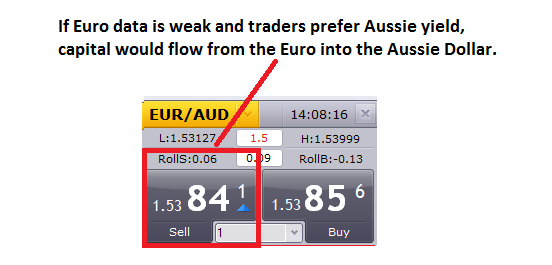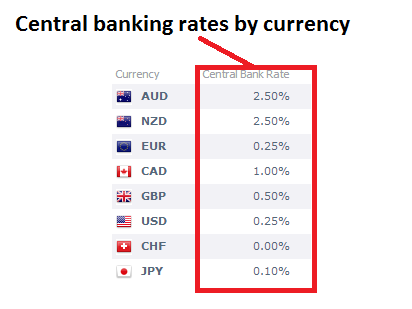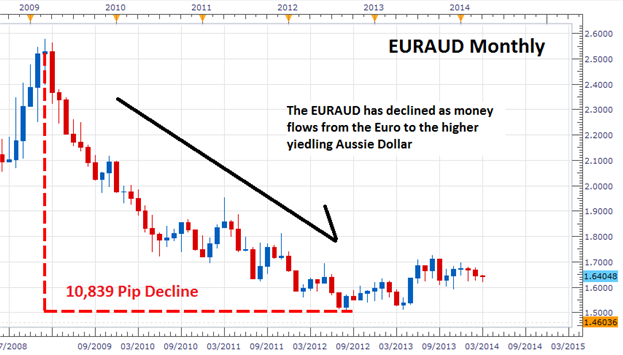Talking Points:
- Capital flows calculates money moving in and out of a currency
- Economic events and interest rates all affect capital flows
- Carry Traders look to take advantage of interest rate differentials
Fundamental analysis in Forex studies economic factors that cause shifts in buying and selling patterns of traders. As demand increases for a currency so does its value. Likewise as money flows out of a currency its value begins to decrease.
To get a better view on how these movements affect the market, today we will analyze capital flows and interest rates. Let’s get started!
What is a Capital Flow
Capital flows describes the flow of funds in to or out from a particular currency. Normally this flow is directly related to capital investments inside of a particular country. For instance, if foreign investors wanted to invest in stocks on the S&P 500 , it would require Dollars to do so. This means money would flow into the USD from another currency to make the purchase.
The logic from here is one of supply and demand. If capital inflows exceed outflows that means there is a demand for countries currency. This can provide fundamental trading opportunities as for traders as prices rise to accommodate the new demand. This is also true with a net capital outflow. As there is less demand for a particular countries currency, we would expect a fundamental opportunity to place new sell orders.

Interest Rates & Central Banks
Interest rates are important to capital flows. As investors, speculators, and traders in general all look to maximize their returns they tend to look towards higher yielding investments. That means countries with the highest interest rates, and best economic data tend to see their countries strengthen due to capital flows.
One way to track capital flows is by monitoring economic data on the economic calendar along with central bank releases. Central banks are charges with setting the banking rate that is associated with their currency. As this value changes, so will demand for a particular currency pair. Let’s take a look at an example of this in action.

EURAUD & The Carry Trade
Below we have a monthly chart of the EURAUD. From 2009 to present, the EURAUD has declined as much as 10,839 pips! Why did this happen? The key to understanding this cart is in capital flows. At its peak during this time the central bank target rate as set by the RBA for the AUD was at 4.75%. This is considerably higher than the 1.5% associated with the Euro at its peak for the designated time frame.
Traders and investors alike looking to take advantage of this yield differential were actively selling Euros while purchasing the Aussie Dollar. This allowed traders to collect rollover for holding open their position. Along the way as more traders caught on and demanded more Aussie Dollars, positions began to also gain capital appreciation as the chart began to trend lower. Traders who look specifically for this long term yield are known as carry traders and will continue to hold a currency pair as long as capital flows remain in their favor!
To learn more about the carry trade, read up on the strategy HERE at the University.

Watch the Market
As a fundamental trader, it is important to know how different events affect the valuation of a currency. To follow along with the market and to familiarize yourself with capital flows in Forex, make sure to sign up for a Free Forex Demo account with FXCM. This will allow you to monitor, track and trade currencies in real time.
This will conclude our second look at Forex fundamentals! If you missed one of the previous editions of The Fundamental Guide to Forex, please enjoy the articles linked below.
The Forex Guide to Fundamentals, Part1: What is a Fundamental?
---Written by Walker England, Trading Instructor
To contact Walker, email [email protected] . Follow me on Twitter at @WEnglandFX.
To be added to Walker’s e-mail distribution list, CLICK HERE and enter in your email information
New to the FX market ? Save hours in figuring out what FOREX trading is all about. Take this free 20 minute “New to FX” course presented by Education. In the course, you will learn about the basics of a FOREX transaction, what leverage is, and how to determine an appropriate amount of leverage for your trading.
Register HERE to start your FOREX learning now!
